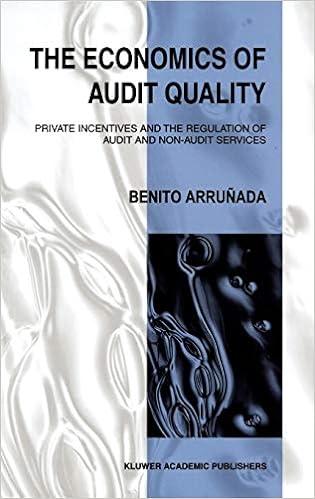Question
Standard cost of product A Materials (5 kgs at RM 10 per kg) Labour (4 hrs at RM5 per hr) Variable overheads (4 hrs at
| Standard cost of product A |
| Materials (5 kgs at RM 10 per kg) |
| Labour (4 hrs at RM5 per hr) |
| Variable overheads (4 hrs at RM2 per hr) |
| Fixed overheads (4 hrs at RM6 per hr) |
| Budgeted Data | Actual Results | ||
| Production: | 1,200 units | Production: | 1,000 |
| Sales: | 1,000 units | Sales: | 900 units |
| Selling price: | RM 150 per unit | Materials: | 4,850 kgs, RM 46,075 |
| Labour: | 4,200 hrs, RM 21,210 | ||
| Variable overheads: | RM 9,450 | ||
| Fixed overheads: | RM 25,000 | ||
| Selling price | RM 140 per unit |
Required:
1. Calculate ALL variances (16 marks) 2. Explain THREE (3) advantages a system of standard costing might bring to a company. (3 marks)
3. Describe THREE (3) disadvantages a system of standard costing. (3 marks) 4. Name THREE (3) individuals who are involved in the setting up of the standard cost. (3 marks)
[Total: 25 Marks]
[GRAND TOTAL: 100 MARKS]
2
Formulas:
Sales Price variance: (AP-SP)AQ
Sales Volume variance: standard profit(AQ-SQ)
Fixed Overhead Spending variance: Actual Budget = Actual (SH x SR X BQ) whereby BQ is budgeted quantity
Fixed Overhead Volume variance: Budget Applied = (SH x SR X BQ) - (SH x SR X AQ) Direct Materials Price variance = (AP-SP)AQ
Direct Materials Quantity variance = (AQSQ)SP
Direct Labor Rate variance= (AR-SR)AH
Direct Labor Efficiency variance = (AH-SH)SR
Variable Overhead Spending variance = (AR-SR)AH
Variable Overhead Volume variance = (AH-SH)SR
Step by Step Solution
There are 3 Steps involved in it
Step: 1

Get Instant Access to Expert-Tailored Solutions
See step-by-step solutions with expert insights and AI powered tools for academic success
Step: 2

Step: 3

Ace Your Homework with AI
Get the answers you need in no time with our AI-driven, step-by-step assistance
Get Started


